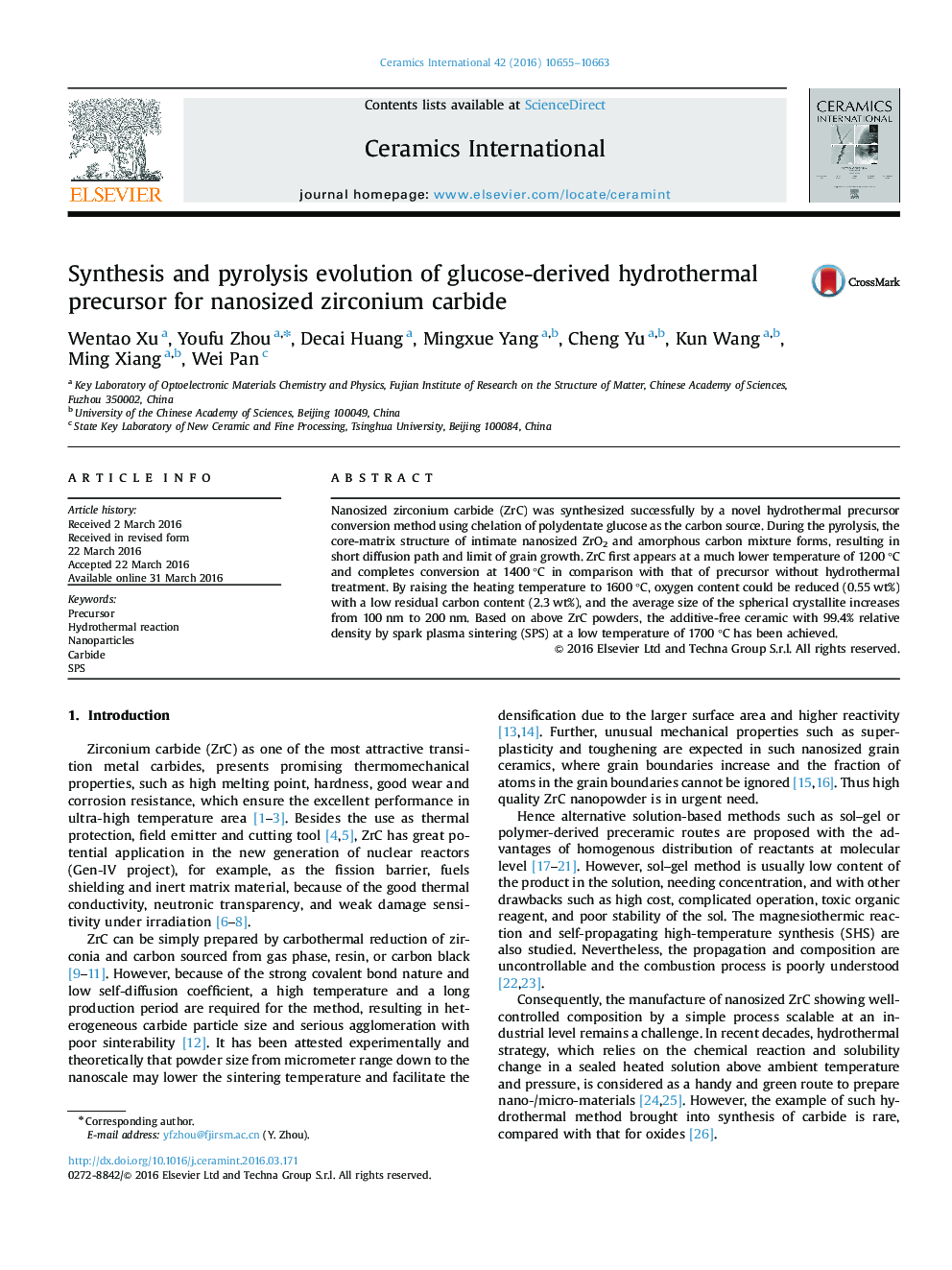| Article ID | Journal | Published Year | Pages | File Type |
|---|---|---|---|---|
| 1458605 | Ceramics International | 2016 | 9 Pages |
Abstract
Nanosized zirconium carbide (ZrC) was synthesized successfully by a novel hydrothermal precursor conversion method using chelation of polydentate glucose as the carbon source. During the pyrolysis, the core-matrix structure of intimate nanosized ZrO2 and amorphous carbon mixture forms, resulting in short diffusion path and limit of grain growth. ZrC first appears at a much lower temperature of 1200 °C and completes conversion at 1400 °C in comparison with that of precursor without hydrothermal treatment. By raising the heating temperature to 1600 °C, oxygen content could be reduced (0.55 wt%) with a low residual carbon content (2.3 wt%), and the average size of the spherical crystallite increases from 100 nm to 200 nm. Based on above ZrC powders, the additive-free ceramic with 99.4% relative density by spark plasma sintering (SPS) at a low temperature of 1700 °C has been achieved.
Related Topics
Physical Sciences and Engineering
Materials Science
Ceramics and Composites
Authors
Wentao Xu, Youfu Zhou, Decai Huang, Mingxue Yang, Cheng Yu, Kun Wang, Ming Xiang, Wei Pan,
